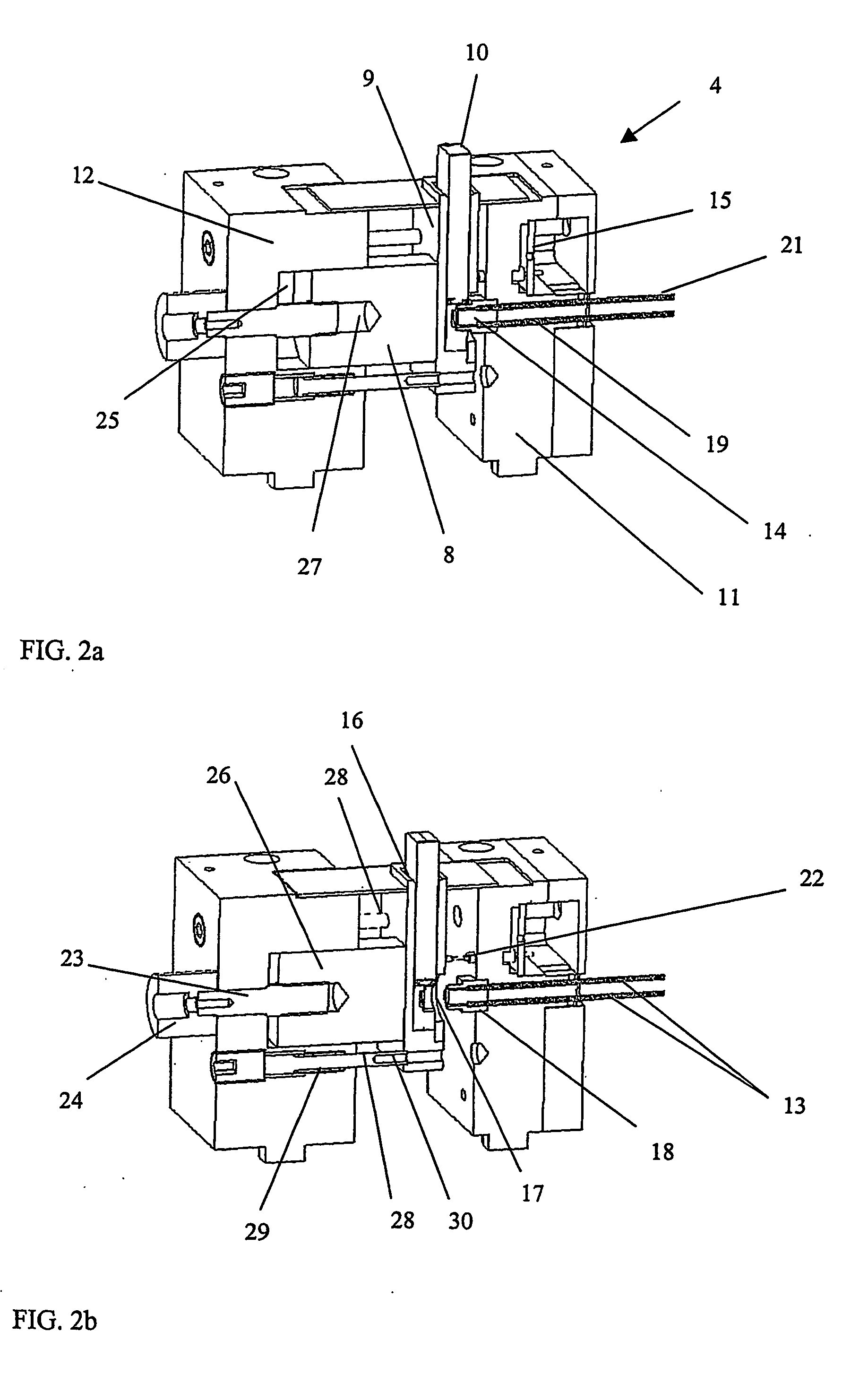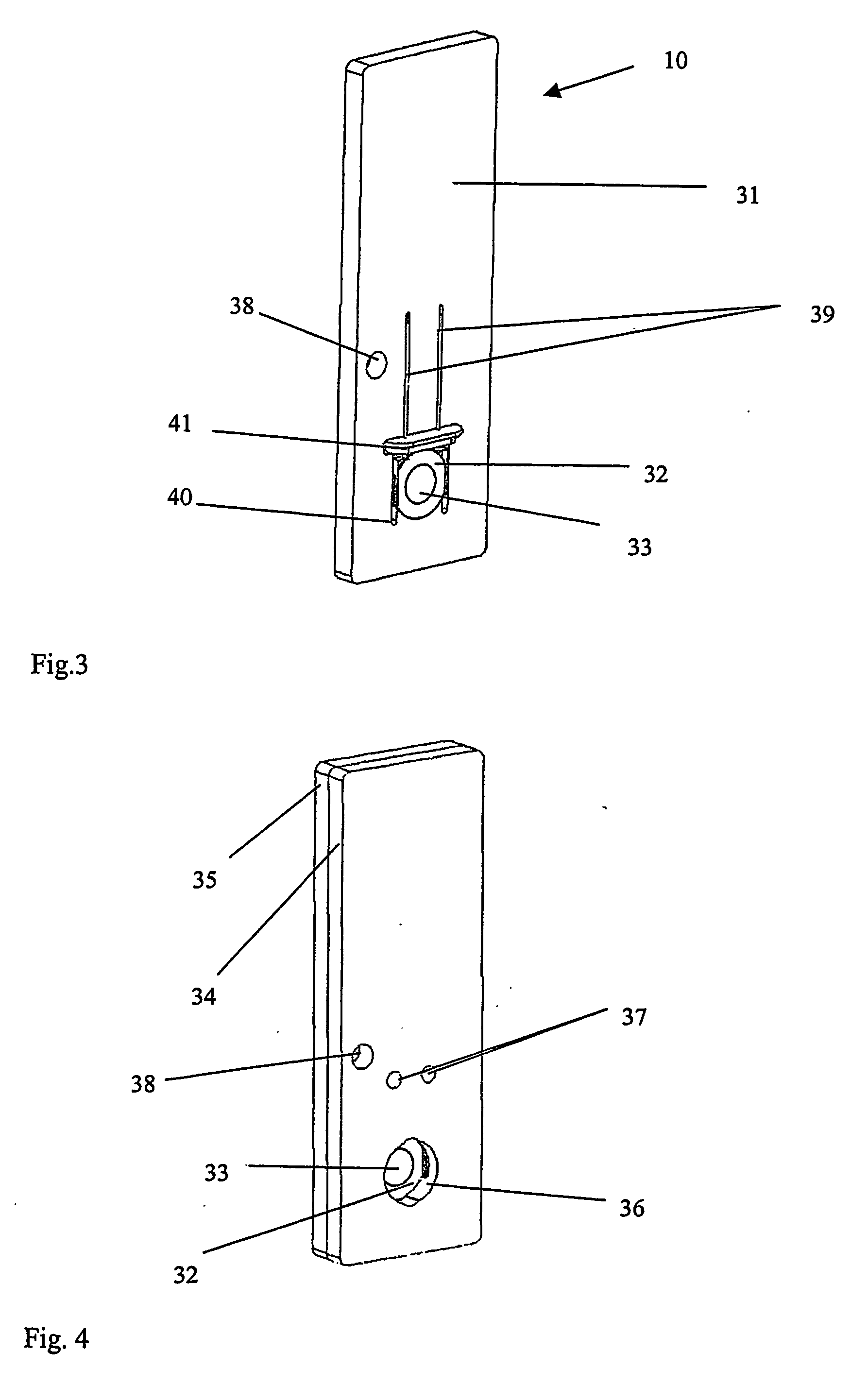Piezoelectric sensor arrangement
a technology of piezoelectric resonators and sensors, which is applied in the field of piezoelectric sensor arrangements, can solve the problems of affecting the resonance behaviour of the piezoelectric resonator, the resonator's resonating behaviour may be impaired, and the use of piezoelectric resonators in these areas has not gained commercial acceptance, so as to achieve the effect of reducing manufacturing costs and being easy to handl
- Summary
- Abstract
- Description
- Claims
- Application Information
AI Technical Summary
Benefits of technology
Problems solved by technology
Method used
Image
Examples
Embodiment Construction
[0030] The piezoelectric sensor arrangement of the present invention is intended to be a part of an analysis system, which is shown in FIG. 1, for sensing chemicals and chemical reactions in liquids. Such an analysis system comprises a computer (PC) 1 for controlling and presenting data, a frequency counter 2, a sample insertion unit 3, a sensor arrangement 4, a buffer solution container 5 and a waste container 6.
[0031]FIGS. 2a and 2b show a piezoelectric sensor arrangement 4 according to a preferred embodiment of the invention. The arrangement comprises a docking system, which includes a first part 8 provided with means 9 for receiving a sensor element 10 and a second part 11, 12, which comprises fluid channels 13 for the sample and a flow cell element 14. The flow cell element is preferably removable. The first and second parts are movable in relation to each other between a closed position (FIG. 2a) and an open position (FIG. 2b). The sensor element 10 exposes a piezoelectric qu...
PUM
 Login to View More
Login to View More Abstract
Description
Claims
Application Information
 Login to View More
Login to View More - R&D
- Intellectual Property
- Life Sciences
- Materials
- Tech Scout
- Unparalleled Data Quality
- Higher Quality Content
- 60% Fewer Hallucinations
Browse by: Latest US Patents, China's latest patents, Technical Efficacy Thesaurus, Application Domain, Technology Topic, Popular Technical Reports.
© 2025 PatSnap. All rights reserved.Legal|Privacy policy|Modern Slavery Act Transparency Statement|Sitemap|About US| Contact US: help@patsnap.com



